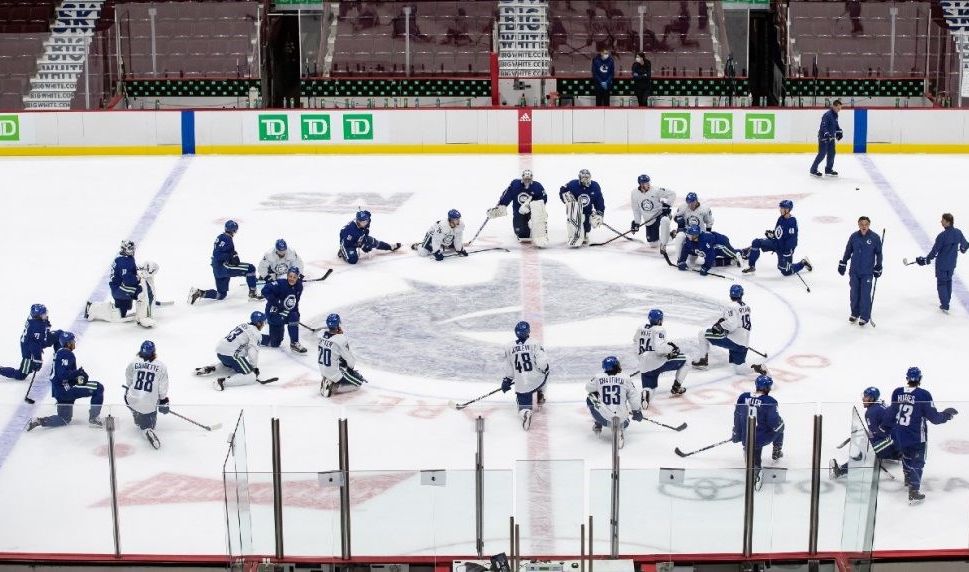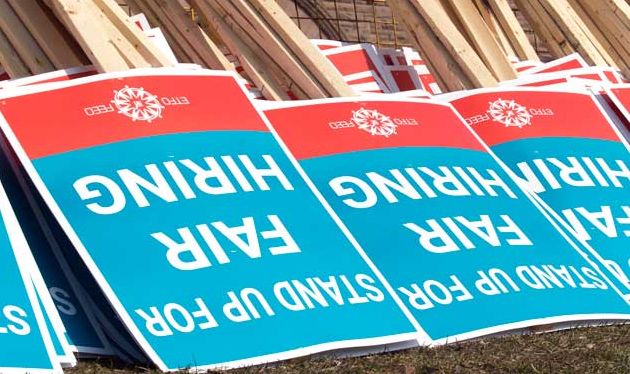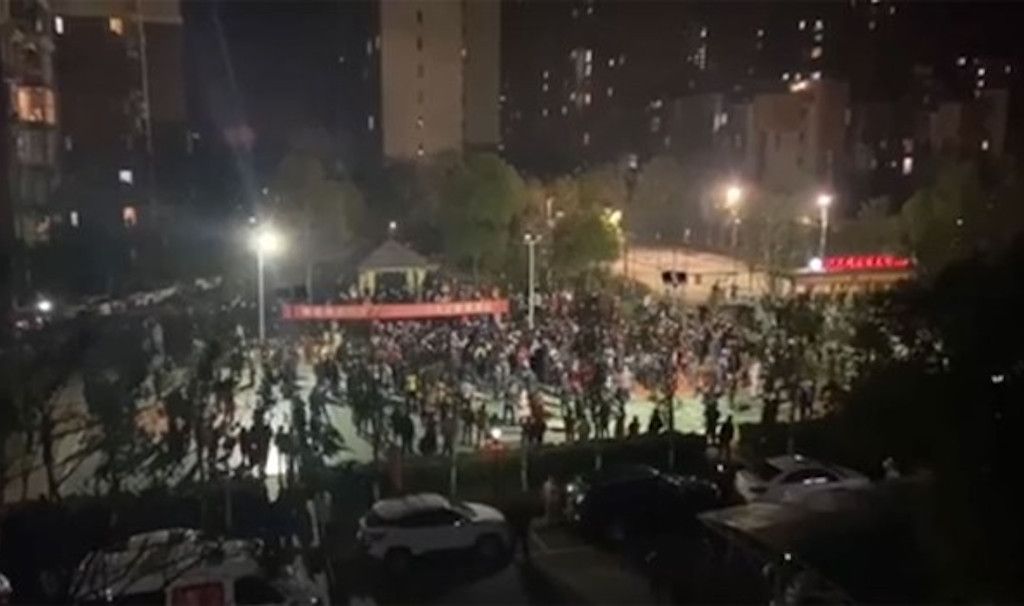The Vancouver Canucks finally took to their home ice and notched a 3-2 overtime win over the Toronto Maple Leafs in an empty Rogers Arena on April 18. In spite of the win, the Canucks were mostly on the back foot and looked somewhat sluggish in their first National Hockey League game in 25 days. In the preceding weeks, COVID-19 had ripped through their dressing room, infecting almost every player and several members of the coaching and training staffs.
Canucks players, who were key in ensuring professional hockey followed professional basketball’s lead in a two-day strike during last summer’s playoffs after the murder of George Floyd and resulting surge of the Black Lives Matter movement, have suffered the worst outbreak of the virus in North American sports. Twenty-one players, four coaches, and an unknown number of staff and family members (including one player’s pregnant wife) tested positive in late March and April for the particularly virulent P1 (Brazilian) variant of a virus whose long-term effects (besides potential death) can include heart and lung damage, as well as increased risk of blood clots, strokes, seizures, and possibly even behavioural changes.
There have been calls from doctors, sports media, and fans to simply cancel the rest of the Canucks’ season, calls at least partly reinforced by the likelihood that the team was unlikely to make the playoffs. But the NHL is dead set against this move, and has said that this team in recovery, with several players still too sick to return to the ice, must now play an unprecedented 19 games in just 32 days.
Canucks’ forward J.T. Miller spoke publicly about himself and his teammates being forced back to work. At a virtual press conference on April 14, two days before a game against the Edmonton Oilers, which was then postponed, he said that returning to play would be “dangerous to a lot of players. What we’re being asked to do is not going to be too safe, if you’re asking me.” He added: “It’s kind of frustrating, if I’m being honest with you. We try to talk about the number-one priority being the players’ health and their families’ safety, and it’s almost impossible to do what they’ve asked us to do here on our return.”
This public chastisement – very unusual for the sport of hockey, with its typically conservative traditions and its reputation of players not saying much beyond “giving 110 percent” – was credited with the delay of the Canucks’ return to competition for a further two days.
Other sports teams have also had to deal with outbreaks over the past year. The Colorado Avalanche are the latest NHL team to require postponements (of at least their next three games), the second separate occasion they’ve had to do so since the shortened regular season started on January 13. The Canadian Football League cancelled the entire 2020 season and 2021 is in doubt. US professional basketball, baseball and football teams have had positive cases. Dozens of US college basketball teams, including the eventual men’s national champion Baylor Bears, had outbreaks and cancelled games, as part of the premature reopening of university campuses.
As of this writing, 53 NHL games have been postponed, but the league bosses are determined to squeeze every bit of play and profit they can out of this season, and that means completing the full schedule no matter what. Even in a pandemic with few or no fans in the stands, hockey is a money-making business. In the COVID-shortened 2019–20 season, with the cash-cow playoffs played in empty arenas and thereby providing no revenue in ticket sales, NHL teams made profits totalling US$250 million. This was buoyed by the Montreal Canadiens and New York Rangers making US$87 million each, so that even with 15 of the league’s 31 teams posting losses that year, the average team profit was still over US$8 million. Profits were about three times higher in the 2018-19 season. The league’s revenue is due to be further boosted this year by $80 to $90 million worth of new sponsorships, including (to many fans’ chagrin) the first-ever advertising on players’ helmets. It’s never a bad time to be a sports owner, it seems.
Meantime, for elite athletes, a pandemic is quite an un-fun time to be playing the games they love. In addition to being cooped up in hotel rooms and playing in front of empty seats, the possibility of lasting COVID-19 lung damage alone could severely threaten their careers, which for most players of all sports are brief even in normal times. While the top 25 percent of NHLers have an average big-league career of 12 years, the other 75 percent have an average of just two years to make any significant NHL money before being dropped back down to the minors or setting sail for a lower-tier, far-lower-paying league in Europe.
These sports workplaces mirror a lot of other ones that have gotten much less in the way of headlines. We can draw certain parallels between these players and many of the other workers who have been placed in COVID peril over the last year. There are many differences, of course: NHL players are all male and overwhelmingly white, and it’s unlikely that any NHL player without extenuating circumstances (such as a gambling or drug addiction or a chronic medical condition) could be considered financially troubled. The differences with, say, the workers at other COVID-hotspot workplaces such as an Amazon fulfillment centre, a Cargill meatpacking plant, or an overcrowded school are obvious and shouldn’t be discounted.
But in any capitalist workplace, the fundamental relationship between worker and boss is the same. And the interests of the bosses, whatever their industry, are absolutely the same: to pay their employees as little as possible while squeezing as much value out of them as possible, whether that’s in the form of tenderloins or TV rights (the NHL just signed a seven-year, US$2.8 billion American broadcasting deal with Disney and ESPN). Further, the way for these workers – well-paid and poorly paid – to force their issues to be addressed is the same as well: withdrawal of the labour that pays their bosses’ bills and fills their bosses’ bank accounts.
Unfortunately, the unions responsible for the workers in both of these workplaces have not been nearly combative enough in fighting to ensure that their members are safe, whether that is accomplished by better protections on the job or the shutting down of the job until it’s safe to resume. The National Hockey League Players’ Association officially signed off on the Canucks’ return to play, in spite of the reticence of some of the team’s players. Similarly, the United Food and Commercial Workers Union (UFCW) did not organize a shutdown of Cargill’s facilities, including the one in High River, Alberta, in spite of over 1,500 COVID cases and three deaths linked to the plant in April 2020 and in subsequent, smaller outbreaks there.
The NHL’s players need to ensure that their union fights for their interests, especially because a collective bargaining renegotiation is fast-approaching and they don’t want to lose more financial ground to the NHL’s billionaire owners, as happened in the NHL lockout of 2014. These owners include the Canucks’ Francesco Aquilini, who has made fistfuls of money from his time as a junior slumlord to his father in Vancouver’s West End in the 1980s all the way to short-changing migrant workers at one of his family’s blueberry farms in 2018. Likewise, the meatpackers at Cargill will need to push the UFCW to fight for safe working conditions or shut down unsafe production when their lives are threatened by COVID, as well as to get better pay and other workplace benefits.
Further, hockey players and fans need to ask why the teams they play for and support should have owners at all. Hockey clubs, and clubs of all sports, should be owned and operated democratically by their players, fans, staff, and communities. Having these people in charge would ensure that players are not put in undue danger to entertain the rest of us, and no community would ever again be faced with the threat of having its team ripped away and relocated to a more profitable “market,” as happened to the Quebec Nordiques and Winnipeg Jets in the 1990s. Players’ and coaches’ salaries could be lowered to a more relatable and equal level, with good pensions and benefits for those who’ve left the game. Ticket prices would be lowered even more drastically, so that working-class fans of all ages could again afford to fill the stands and chase out the uninterested “suits” who occupy far too many of the good seats, often through their company’s sponsorship deals. We see potential signs of revolt along these lines in the world of soccer, where a proposal by the owners of 12 of Europe’s biggest clubs to form a hyper-monetized “Super League” was met with such outrage from fans and players around the globe that the plan collapsed in barely 48 hours. Many are now demanding punitive action against the clubs’ owners and are discussing what actions to take in order to ensure that such a money-grabbing attempt cannot be made again. Not only hockey players, but hockey fans can and should organize to defend their game.
Of course, things need to be kept in perspective. Hockey players are not going to lead a socialist transformation of Canada. Hockey is still one of the most conservative team sports around. Shamefully, at least two teams’ players even crossed a hotel picket line in Boston in 2018. But the fact that the players even of this sport are beginning to become more dissatisfied and outspoken about their working conditions is a barometer that bodes well for the labour movement. And if these well-paid, high-profile workers start to lend more support to other struggles, not just of labour but also of racial justice and women’s equality – both of which are of increasing importance in the hockey world, due first and foremost to the organization and agitation of BIPOC and women hockey players themselves – the confidence of a huge mass of workers in Canada could take a powerful stride forward.




